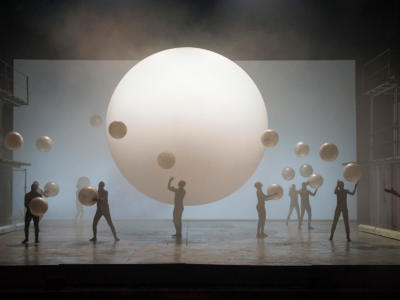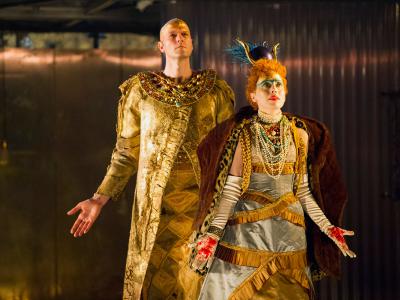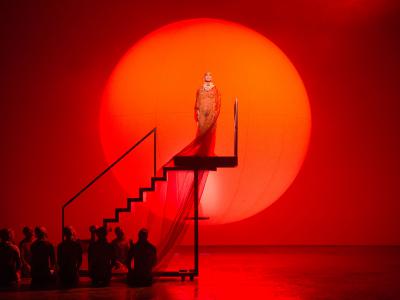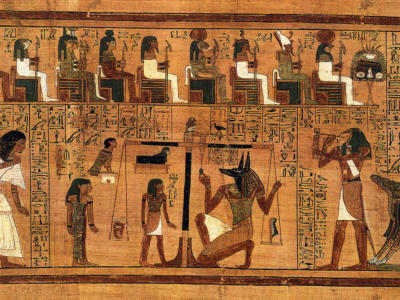Explore Akhnaten: The Director's Note
Director Phelim McDermott writes:
“The challenge of directing a Philip Glass opera is to develop a vocabulary for his non-narrative style of work. During rehearsals we explored how we might perform it so that it could sustain an intensity throughout the whole piece.
The score gives only an indication of the events that happen. Each scene has a title, for example ‘Funeral of Amenhotep III’ but there was very little further constraint. This allowed us to create our own narrative within the piece. We found that performing anything quickly didn’t work with the shape and character of the music. We therefore developed a performance practice that relied on slow movement.
In each of the Glass operas I’ve worked on, we’ve found a different visual language for this: in Satyagraha it was through puppetry, sellotape and newspaper, in The Perfect American it was through animation. In Akhnaten we have developed a choreographic juggling language that uses the systemic patterns in juggling to create visual rhymes that complement the music. We were inspired by images from the period that show the ancient Egyptian juggling balls.”
Video
Notes from the rehearsal room
To address how the creative team might stage some of the scenes in the opera, Phelim McDermott introduced rehearsal techniques developed by Michael Chekhov which concentrate on physical movements through space, notably moulding, floating, flying and radiating. This was particularly useful for the family scene without words at the beginning of Act 3.
The team drew on Chekhov movements and Laban movement practice in this scene, beginning by moulding the daughters together as one unit. They began to discover a common movement and even began to breathe together. Later in the scene McDermott introduced the technique of ‘radiation’ as the performers moved around the space. From these movement dynamics , a narrative started to develop. When we linked the two sections it became clear that the moulding movements suggested the development of a strong family bond, which gradually radiated outwards. Similar images of a tight family unit radiating power can be found on stelae (engraved stone or wooden slabs) from the period.
Video




